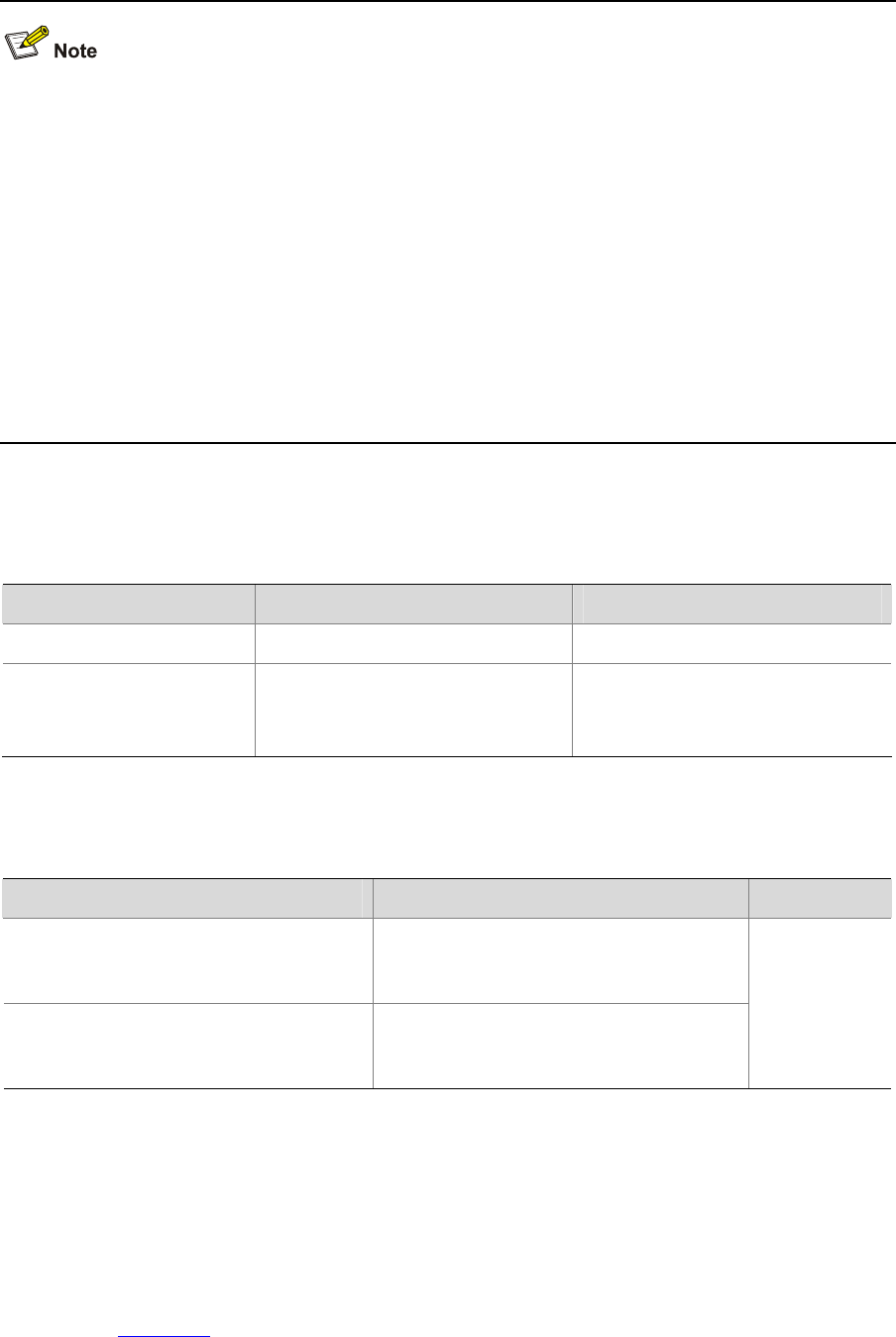
3-8
z If you configure a remote ID sub-option in both system view and on a port, the remote ID
sub-option configured on the port applies when the port receives a packet, and the global remote
ID applies to other interfaces that have no remote ID sub-option configured.
z If you have configured a remote ID with the vlan vlan-id argument specified, and the other one
without the argument in Ethernet port view, the former remote ID applies to the DHCP messages
from the specified VLAN, while the latter one applies to DHCP messages from other VLANs.
z In a port aggregation group, you can use this command to configure the primary and member ports
respectively. When Option 82 is added, however, the remote ID is subject to the one configured on
the primary port.
z The remote ID configured on a port will neither be synchronized in the case of port aggregation nor
support XRN.
Configuring the padding format for Option 82
Follow these steps to configure the padding format for Option 82:
To do… Use the command… Remarks
Enter system view
system-view
—
Configure the padding
format
dhcp-snooping information
packet-format { extended |
standard }
Optional
By default, the padding format is
in extended format.
Displaying and Maintaining DHCP Snooping Configuration
To do… Use the command… Remarks
Display the user IP-to-MAC address
mapping entries recorded by the DHCP
snooping function
display dhcp-snooping [ unit unit-id ]
Display the (enabled/disabled) state of
the DHCP snooping function and the
trusted ports
display dhcp-snooping trust
Available in
any view
DHCP Snooping Configuration Examples
DHCP-Snooping Option 82 Support Configuration Example
Network requirements
As shown in Figure 3-6, Ethernet 1/0/5 of the switch is connected to the DHCP server, and Ethernet
1/0/1, Ethernet 1/0/2, and Ethernet 1/0/3 are respectively connected to Client A, Client B, and Client C.
z Enable DHCP snooping on the switch.
z Specify Ethernet 1/0/5 on the switch as a trusted port for DHCP snooping.


















